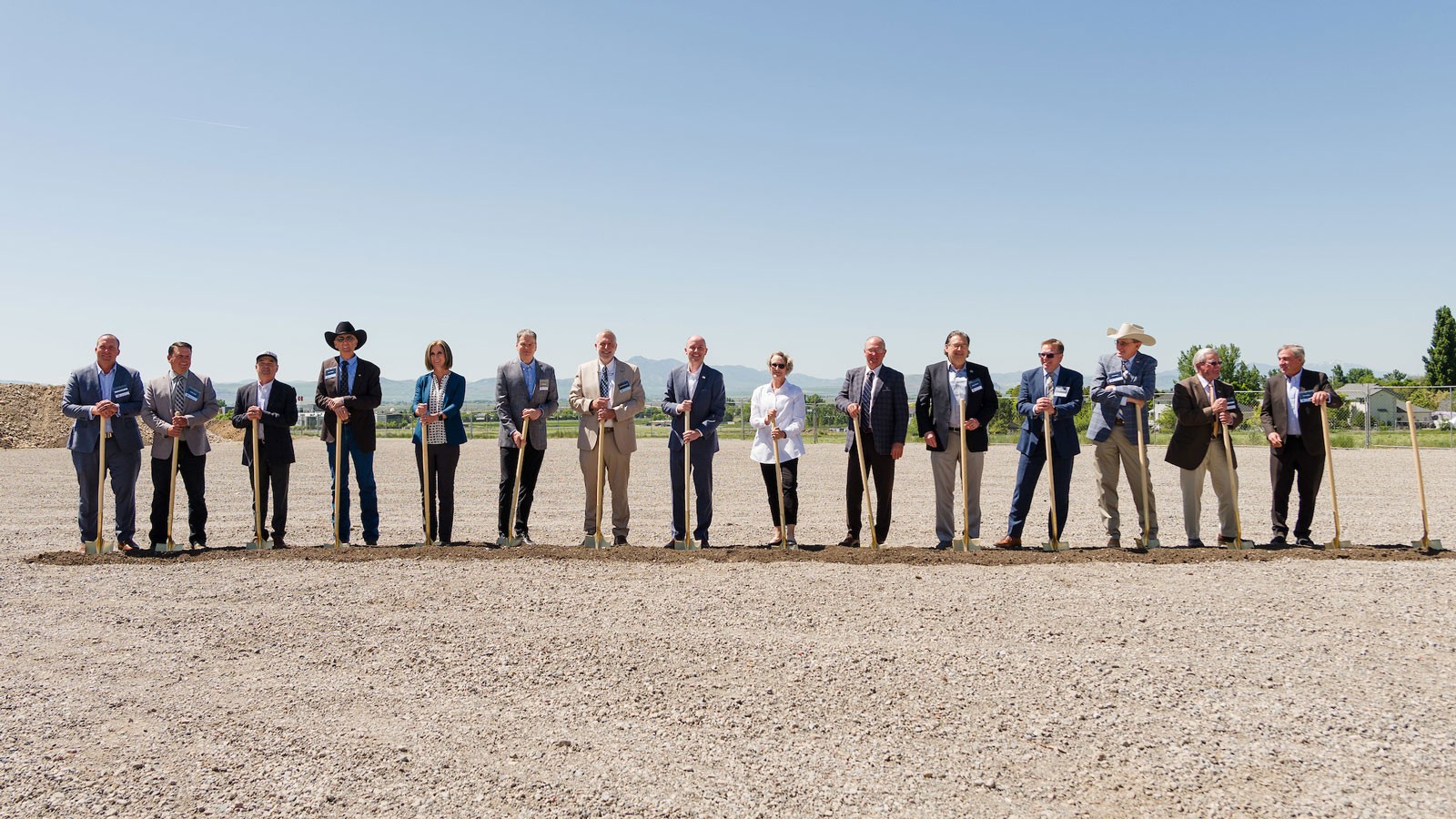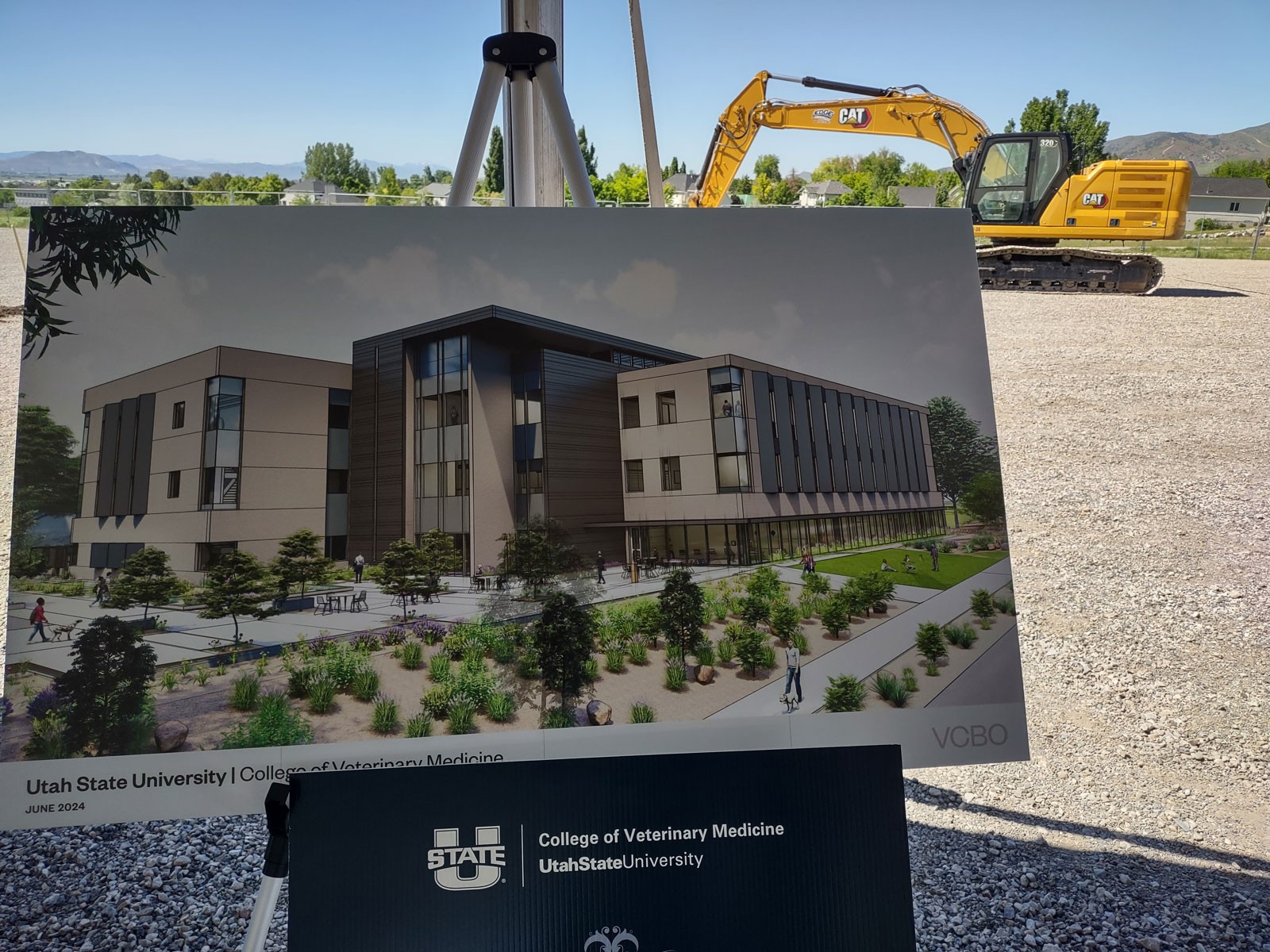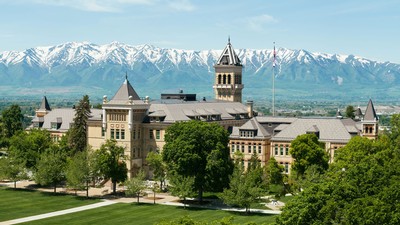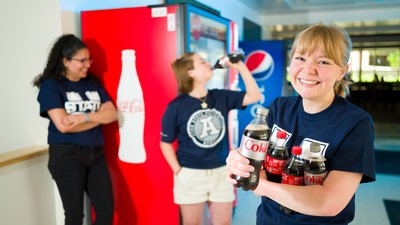USU Breaks Ground for Veterinary Medical Education Building
By Lynnette Harris |
Utah State University officially broke ground on May 31 for the new Veterinary Medical Education Building on the university’s main campus in Logan.
For some, the building at the northwest corner of 1400 North and 1200 East will be their academic home. For others, including veterinarian and former state legislator Dr. John Mathis and Utah Gov. Spencer Cox, it will be the fulfillment of long-held goals.
Mathis sponsored legislation in 2011 that established USU’s School of Veterinary Medicine and participation in the Washington-Idaho-Montana-Utah Regional Program in Veterinary Medicine, but he was driven by more than professional interests: it was about a promise he made to himself decades earlier when he learned that his father had once abandoned his dreams of becoming a veterinarian.
“My father was from St. George and after World War II, he came home, married his sweetheart, and went up to Utah State to get an education, and his dream was to become a veterinarian,” Mathis told guests at the groundbreaking. “But he realized that to do it, he'd have to leave the state, and he couldn't do it. He had been gone too many years already, and so he gave up on his dream because of the distance. And I remember as a young boy thinking that if I was ever in a position where I could help Utah kids follow their dreams and be educated in Utah, live in Utah, work in whatever profession they wanted, I'd do it.”
Gov. Cox told how he was surprised years ago to learn that his brother-in-law’s goal of becoming a large animal veterinarian couldn’t be achieved at Utah’s agricultural school or anywhere else in the state.
“If you look at higher ed in Utah, we are very fortunate and the feedback we get from other states is that we have one of the best systems of higher education anywhere in the country,” Cox said. “And for a state our size, it's impossible that we should have these universities … But there's always been a piece missing, and it's this piece, it's the one thing. We have our medical school, we have amazing business schools, we have everything else we've ever needed, but we never had this piece, and it just didn't make sense. Now we're closing that gap and I'm so grateful that it’s here at my alma mater that we are able to do this.”
Cox and others echoed the message that large animal veterinary medicine is a critical need in many of Utah’s rural areas and vital to the agricultural industry that contributes $1.82 billion to the state’s economy. Animal agriculture — including beef cattle, dairy cows, poultry, sheep, goats, llamas and other animals — comprises $1.28 billion of that total.
“I know in vet medicine, the money's with the dogs and cats, but we desperately need more large animal vets in our state,” Cox said. “To those of us from rural Utah who are in the ag business, I'm most excited about the opportunity to get to train some of our homegrown talent and keep them here. … We'll be able to keep agriculture alive and thriving in our state; that's going to make a huge difference for us.”
USU President Elizabeth Cantwell noted that the college is built on the “One Health” approach that recognizes that human, animal and environmental health are interconnected.
“Utah State is the right place for this college because as a land-grant school, we understand that the people we train and the research we do must address the needs of Utah,” Cantwell said. “We seek to create not just a bright future for rural or urban Utah, but the combination of the two and that's what Utah needs to be successful in the decades to come.”
In addition to the DVM degree, the college offers master’s and Ph.D. degrees in biomedical sciences, and a fully online master of veterinary public health degree. Cantwell said the new college and facilities will be a catalyst for growth in biomedical science and biotechnology research in the state as well as build careers and companies.
Dr. Dirk Vanderwall, dean of the College of Veterinary Medicine told how the start of the new building and college have been 117 years in the making, reaching back to 1907 when Utah Agricultural College’s board of trustees approved the creation of a vet school. However, at that time, the Agricultural College of Utah (as USU was known then) did not have the required four graduate veterinarians on the faculty and the plan never reached fruition.
The college ultimately launched more than 100 years later, when a bill was strongly supported by the Utah Legislature to create a School of Veterinary Medicine in USU’s College of Agriculture. Since 2012, the program has used existing buildings and facilities to train each class of about 30 students, who complete their first two years of study at Utah State and the final two years at Washington State University.
Vanderwall said that since the first class of DVM students graduated in 2016, 262 USU-trained veterinarians are now practicing, and alumni are serving communities in 25 of Utah’s 29 counties and several other states.
College of Veterinary Medicine administrators and faculty are working toward gaining full accreditation from the American Veterinary Medical Association and anticipate that the first class of students who will earn their doctor of veterinary medicine degrees entirely in Utah will begin their coursework fall semester of 2025.
With the creation of the four-year program and new building, USU intends to expand its capacity and accept up to 80 students per year. The new state-funded building, designed by Salt Lake City-based VCBO Architecture will cost an estimated $77 million with laboratories, classrooms, offices, and study spaces. Jacobson Construction is the general contractor and the building is expected to open in summer 2026.
WRITER
Lynnette Harris
Marketing and Communications
College of Agriculture and Applied Sciences
435-764-6936
lynnette.harris@usu.edu
CONTACT
Michael Bishop
Director of Academic and Student Affairs
College of Veterinary Medicine
michael.s.bishop@usu.edu
TOPICS
Utah 381stories Vet Sciences 64storiesComments and questions regarding this article may be directed to the contact person listed on this page.









